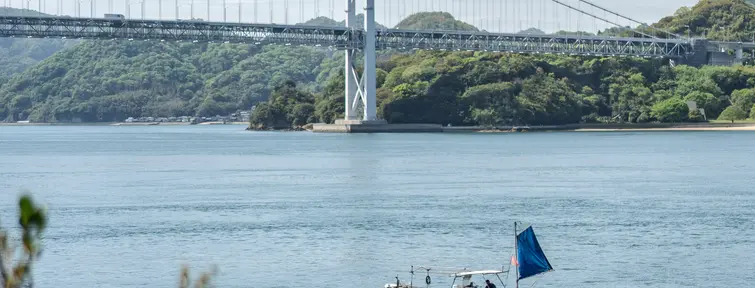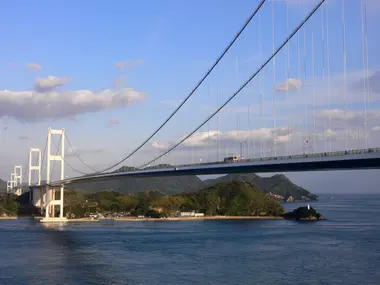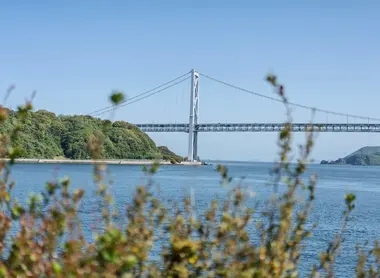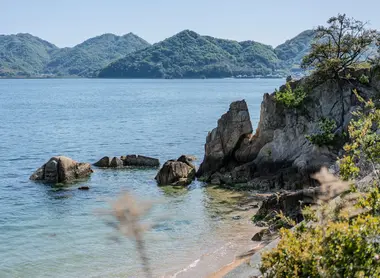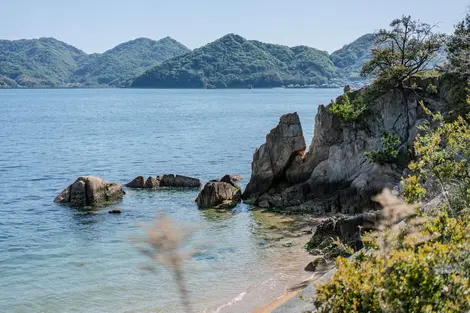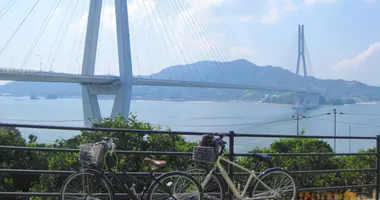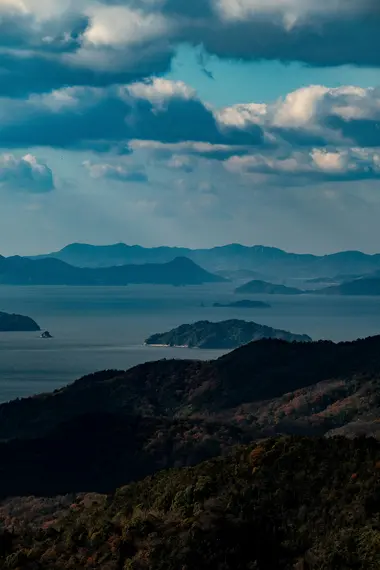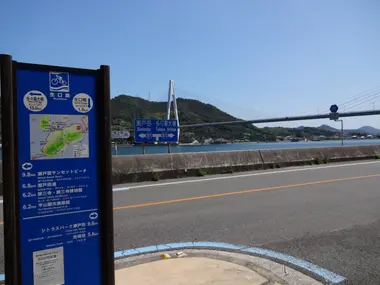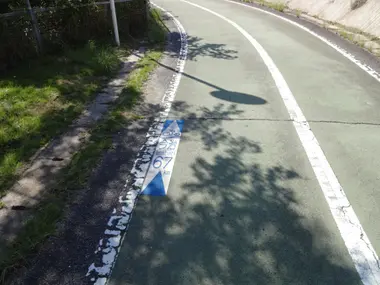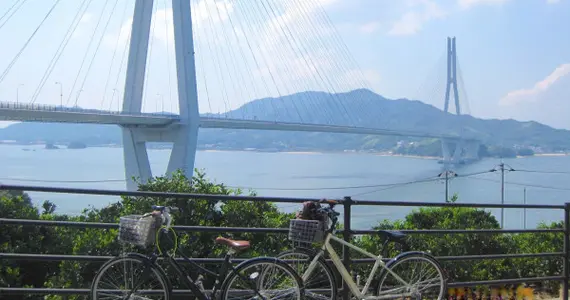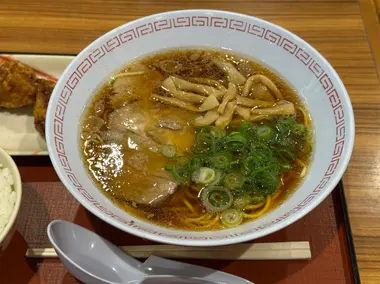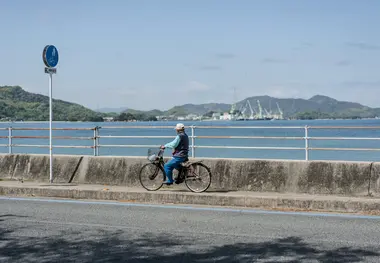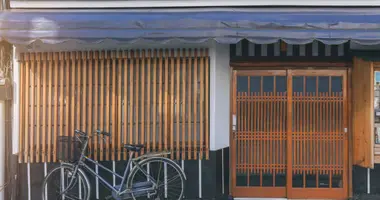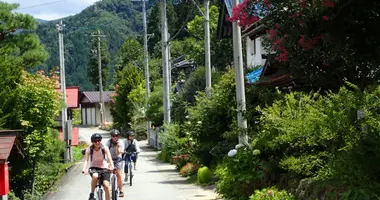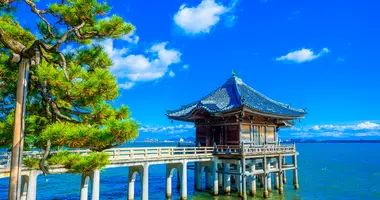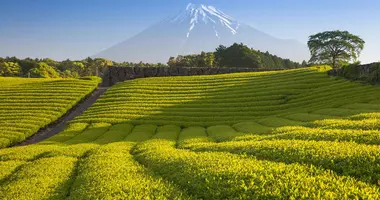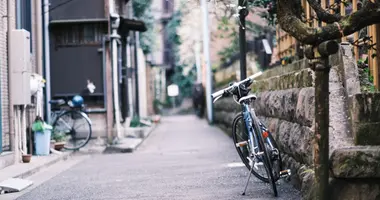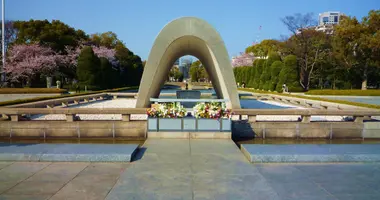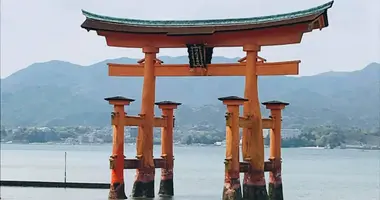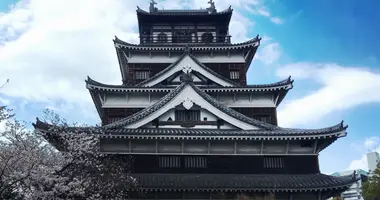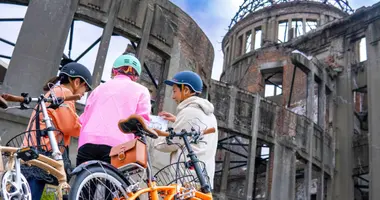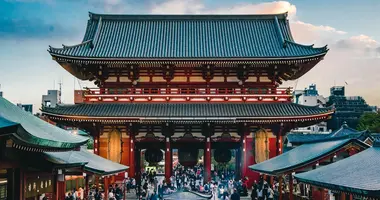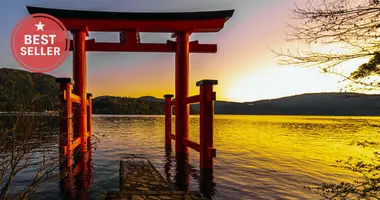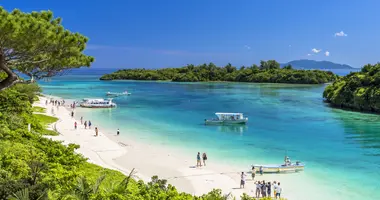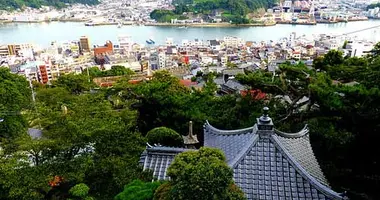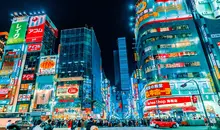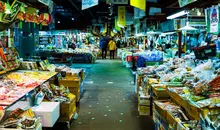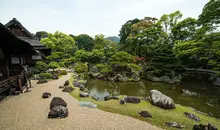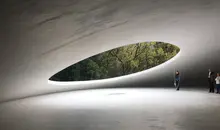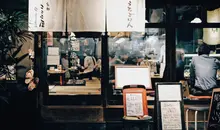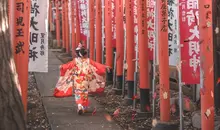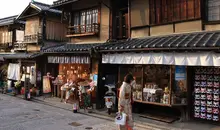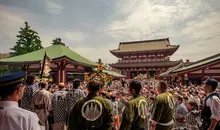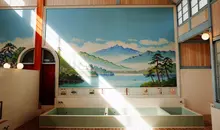La Shimanami Kaido: un recorrido a través de las islas de Seto
- Publicado el : 05/07/2017
- Por : J.L.
- Youtube
En bici por el Mar Seto
El Shimanami Kaido es una emblemática ruta de 70 kilómetros que une Onomichi, en la isla de Honshu, con Imabari, en la isla de Shikoku. Inaugurado en 1999, este excepcional carril bici atraviesa seis pequeñas islas y siete espectaculares puentes sobre el Mar Interior de Seto. Apodada la"tierra santa del ciclista" por los entusiastas del ciclismo, ofrece una inmersión única en el Japón rural y marítimo. Tanto si es un deportista entusiasta como un viajero en busca de descubrimientos, el Shimanami Kaido ofrece impresionantes paisajes costeros, pintorescos pueblos pesqueros y exuberantes huertos de cítricos.
Presentación del Shimanami Kaido y su recorrido
El Shimanami Kaido es mucho más que un carril bici. Esta ruta excepcional, terminada en 1999, une la isla principal de Honshu con Shikoku, atravesando el Mar Interior de Seto. Su singular trazado permite a ciclistas, así como a peatones y automovilistas, viajar de isla a isla a través de un impresionante paisaje marítimo.
La ruta pasa por seis islas: Mukaishima, Innoshima e Ikuchijima, en la prefectura de Hiroshima, y luego Omishima, Hakatajima y Oshima, en la prefectura de Ehime. Estas islas están unidas por siete majestuosos puentes, entre ellos el de Kurushima Kaikyo, el primer puente colgante triple del mundo con 4.100 metros de longitud. Cada puente ofrece unas vistas excepcionales del mar interior y de las islas circundantes.
La característica especial de esta ruta es su accesibilidad. A diferencia de la mayoría de las autopistas japonesas, la Shimanami Kaido cuenta con carriles especialmente diseñados para ciclistas, marcados por una línea azul continua a lo largo de toda su longitud. Esto permite a los viajeros concentrarse plenamente en la belleza del paisaje que pasa ante sus ojos, en lugar de orientarse.
Los ciclistas experimentados pueden cubrir toda la ruta en 3 ó 4 horas, mientras que los visitantes que deseen aprovechar al máximo la experiencia se tomarán un día entero, o incluso varios, para explorar las riquezas culturales y naturales de las islas que atraviesen.
Cómo llegar a Onomichi y prepararse para la aventura ciclista
Onomichi, punto de partida habitual del Shimanami Kaido, es fácilmente accesible desde las principales ciudades japonesas. Desde Hiroshima, calcule alrededor de 1 hora y 20 minutos en tren local vía la estación de Mihara. Si viene de Tokio, Osaka o Kioto, tome primero el Shinkansen hasta Fukuyama, y después el tren local (20 minutos) hasta Onomichi.
Una vez en Onomichi, merece la pena visitar esta pintoresca ciudad portuaria. Famosa por sus numerosos templos unidos por un camino de peregrinación y sus empinadas calles que ofrecen impresionantes vistas del mar, Onomichi fue el escenario de la película de Ozu Yasujirô "Viaje a Tokio". No se pierda el Paseo del Gato de Onomichi, una sinuosa ruta que le llevará a través de la ciudad y sus numerosos felinos.
¡Explora Shimanami Kaido y descubre sus tesoros!
Antes de comenzar su aventura en el Shimanami Kaido, necesitará alquilar una bicicleta. Hay varias opciones:
- Las 14 estaciones de alquiler oficiales a lo largo de la ruta ofrecen bicicletas estándar a 1.000 yenes al día (con un depósito de 1.000 yenes).
- Onomichi U2, una moderna instalación ubicada en un antiguo almacén de transporte, ofrece bicicletas profesionales de gama alta desde 4.000 yenes. Este lugar único también incluye alojamiento donde se puede dormir con la bicicleta, un restaurante y un taller de reparaciones.
- Para mayor comodidad, se ofrecen bicicletas con asistencia eléctrica por 1.500 yenes durante 6 horas, ideales para subir puentes sin excesivo esfuerzo.
Para llegar a la isla de Mukaishima desde Onomichi: tome un ferry en el muelle situado frente a la estación (5 minutos de trayecto por 100 yenes, más 10 yenes por la bicicleta). Es en esta primera isla donde comienza oficialmente el carril bici, indicado por una línea azul que seguirá a lo largo del camino.
Las islas y atracciones del Shimanami Kaido
Cada isla del Shimanami Kaido tiene su propio carácter y atracciones únicas, ofreciendo a los viajeros una inmersión en el auténtico Japón rural y marítimo.
Mukaishima, la primera parada de su viaje, le da la bienvenida con su ambiente tranquilo. No se pierda la histórica panadería Sumida, fundada en 1916, para tomar un vigorizante desayuno antes de continuar su camino.
Innoshima, unida a Mukaishima por un puente de dos pisos de 1.270 metros, es conocida por dos especialidades: las naranjas hassaku (una variedad del tamaño de un pomelo) y su histórica herencia pirata. El castillo de Suigun, construido en 1983, alberga un museo dedicado al clan naval Murakami, activo en la región entre los siglos XIV y XVI. Otra curiosidad local es el hassaku daifuku, un delicioso pastel en el que las naranjas se envuelven en pasta de judías blancas y mochi.
Ikuchijima recibe el sobrenombre de "Isla del Limón" y es famosa por la pesca del pulpo. Hay dos formas de llegar, por el norte o por el sur, ambas a lo largo del mar bordeado de palmeras. El norte ofrece más atracciones, sobre todo el templo Kojo-ji, con su pagoda de tres pisos y vistas panorámicas sobre el mar. Para los golosos, la heladería Dolce ofrece sorbetes elaborados con fruta local, incluido el limón de Ikuchijima.
AOmishima, la isla más grande de la ruta, se llega a través del magnífico puente atirantado de Tatara. La isla está dominada por el santuario Ôyamazumi-jinja, dedicado al hermano de Amaterasu, la deidad protectora de marineros y soldados. Este santuario alberga el 80% de las armaduras históricas de Japón, incluida la de Minamoto no Yoritomo (1147-1199). Para relajarse tras el esfuerzo, le espera el onsen de Tatara Onsen.
Hakatajima, una pequeña isla famosa por su sal de gran calidad, puede atravesarse o explorarse rápidamente a través de un circuito de 17 km alrededor de sus puertos pesqueros. El monte Hirakiyama (149 metros) ofrece una vista panorámica de 360°.
Oshima, la última isla antes de Imabari, ofrece varios itinerarios, incluido un recorrido completo de 35 km. En el Parque Yoshiumi florecen 3.500 rosas de mayo a diciembre. Para los ciclistas experimentados, el monte Kirosan (307 metros) ofrece una panorámica excepcional del estrecho de Kurushima. Desde aquí, se puede tomar el puente Kurushima Kaikyô, formado por tres puentes colgantes de un total de cuatro kilómetros de longitud, a 65 metros sobre el mar.
Opciones de rutas y alquiler de bicicletas
Shimanami Kaido ofrece una gran flexibilidad en la organización de su viaje en bicicleta, para adaptarse tanto a deportistas experimentados como a aficionados que deseen disfrutar del paisaje a su propio ritmo.
Hay varias opciones de ruta para elegir:
- La ruta completa (70 km) de Onomichi a Imabari, que puede completarse en un día para ciclistas entrenados (4-5 horas de pedaleo real).
- La misma ruta repartida en dos días, con pernoctación en una de las islas, ideal para aprovechar al máximo las atracciones.
- Itinerarios parciales, visitando sólo algunas de las islas y regresando después al punto de partida.
- La ruta en sentido inverso, de Imabari a Onomichi (más difícil al principio por las empinadas subidas cerca de Imabari).
La ruta está especialmente bien trazada para los ciclistas:
- Una línea azul pintada en el suelo le guía a lo largo de la ruta.
- Las señales indican las distancias restantes hasta Imabari.
- Hay "oasis ciclistas " donde se puede saciar la sed y llenar las ruedas de aire.
- Un servicio de asistencia (Wakka) puede ayudar en caso de problemas mecánicos o cansancio.
Descubra los paisajes del mar de Seto
Alojamiento y cocina local a lo largo de la ruta
Uno de los aspectos más destacados del Shimanami Kaido es la oportunidad de alojarse en las islas y degustar la cocina local, para una inmersión completa en la cultura de esta región marítima.
Las opciones de alojamiento son variadas, lo que permite crear un itinerario a medida:
- Los ryokan tradicionales ofrecen una experiencia auténtica con tatamis, futones y, a veces, baños termales (onsen).
- Los modernos hoteles de Imabari u Onomichi ofrecen todas las comodidades de Occidente.
- Los albergues económicos ofrecen alojamiento asequible.
- Yubune, en Ikuchijima, un baño público que también cuenta con habitaciones donde los ciclistas pueden guardar sus bicicletas, ofrece la oportunidad de sumergirse en la vida local.
- Para una experiencia más lujosa, LEMON FARM GLAMPING Shimanami, en Ikuchijima, ofrece ocho glamping con vistas al mar.
- También hay campings disponibles en cada isla para viajeros con un presupuesto ajustado.
- El inusual HOTEL CYCLE de Onomichi U2 permite registrarse con la bicicleta e incluso llevarla a la habitación.
La gastronomía local es otro punto fuerte del viaje, ya que cada isla tiene sus propias especialidades:
- Los cítricos están por todas partes: naranjas hassaku de Innoshima, limones de Ikuchijima, mandarinas mikan... Se pueden comer frescos o hacer postres, zumos e incluso cerveza.
- El hassaku daifuku de Innoshima, donde la naranja se envuelve en pasta de judías blancas y mochi.
- Pulpo de Ikuchijima, preparado de diversas formas en los restaurantes locales.
- Sal de Hakata, utilizada en muchas especialidades como el ramen salado.
- Nabe de limón, un plato fotogénico de Ikuchijima donde los ingredientes frescos del mar se cubren con multitud de limones.
Consejos prácticos para aprovechar al máximo la experiencia
Para que su aventura en el Shimanami Kaido sea todo un éxito, aquí tiene algunos consejos prácticos que le ayudarán a aprovecharla al máximo:
Cuándo ir
- Las mejores épocas son la primavera (marzo-mayo) y el otoño (septiembre-noviembre), cuando las temperaturas son suaves y el cielo suele estar despejado.
- Evite el verano (junio-agosto), que puede ser muy caluroso y húmedo, lo que dificulta el esfuerzo físico.
- El invierno puede ser fresco, pero transitable, con la ventaja de que hay menos visitantes.
- Consulte las previsiones meteorológicas antes de salir, aunque no siempre son fiables a largo plazo en esta región marítima.
Algunos consejos:
- Si no es un ciclista experimentado, practique un poco antes de salir.
- Utilice el servicio de entrega de equipaje (takkyubin) para viajar ligero.
- Reserve su alojamiento con antelación, sobre todo los fines de semana y en periodos vacacionales.
- Planifique descansos regulares para disfrutar de las vistas.
- Siga la línea azul pintada en el suelo para guiarse por la ruta.
- Siga el código de circulación japonés: conduzca por la izquierda y modere la velocidad en los tramos cuesta abajo.
- No dude en desviarse de la ruta principal para explorar los pequeños puertos y pueblos.
- Si tiene algún problema, póngase en contacto con el servicio de asistencia ciclista Wakka o con los servicios de emergencia (110 para la policía, 119 para asistencia médica).
Para quienes deseen ampliar su experiencia ciclista, hay otras rutas interesantes en la región:
- El Tobishima Kaido, menos conocido que el Shimanami Kaido pero igual de pintoresco, recorre otras islas del Mar Interior. Situadas al oeste del Mar Interior, las dos rutas son fácilmente accesibles entre sí gracias a los transbordadores que las conectan. Playas paradisíacas, casas típicas japonesas, vistas panorámicas sobre el mar de Seto... Tobishima Kaido ofrece un amplio abanico de vistas y maravillas por descubrir
- El Yumeshima Kaido, otra ruta ciclista de la región, ofrece paisajes complementarios.
Descubra Japón en bicicleta
Dirección - Horario - Acceso
Dirección
Acceso
Estación JR Onomichi, a 1 hora y 40 minutos de Hiroshima
